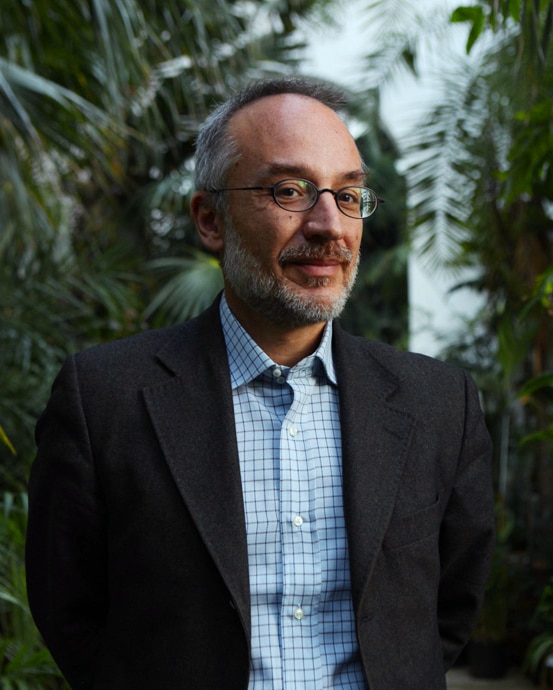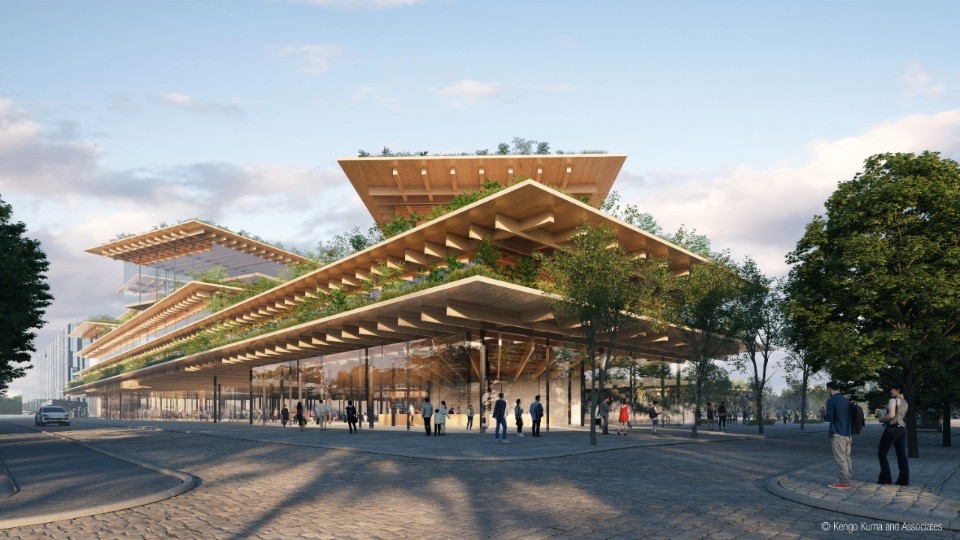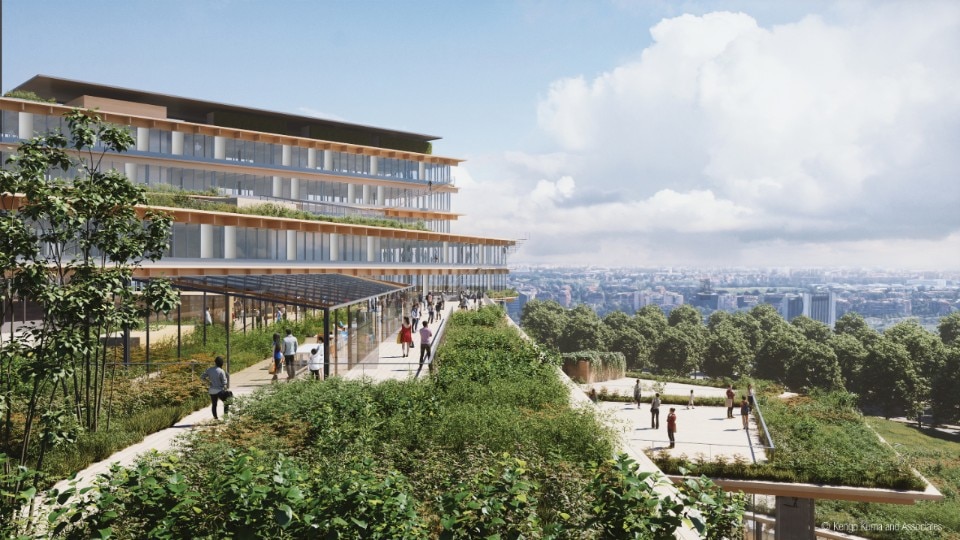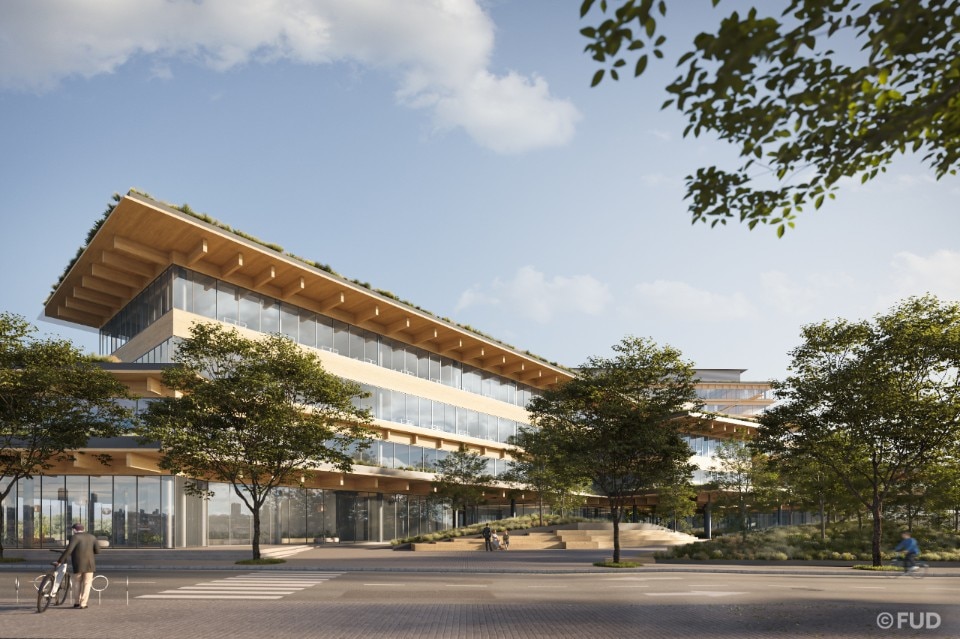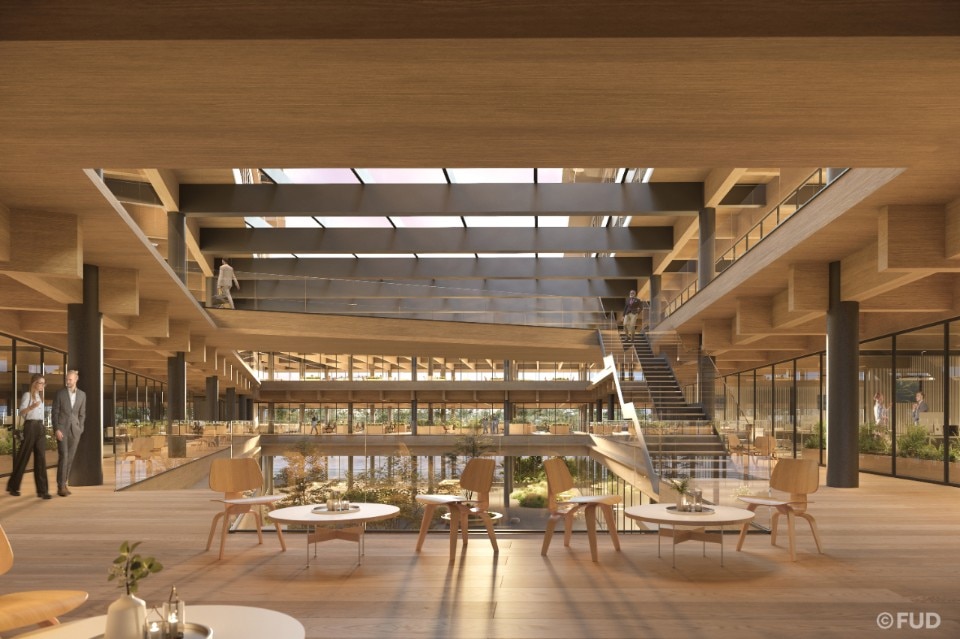It is not a common occasion to meet someone who on a daily basis can say they are working in the realm of Copernican revolutions. Still, this is the case with Stefano Mancuso, professor of general arboriculture and plant ethology at the University of Florence, who has long been engaged in the exploration of what is called plant intelligence – an evolutionary intelligence whose main characteristic is the non-belong to a single nervous system but to what can be defined as a “diffuse brain” – directing the International Laboratory of Plant Neurobiology.
It is a revolution that lies in participating in a gradual deconstruction of an anthropocentric view of the sphere of the living – not only do plants do more and better than we do, but they also do it collectively – especially at a time when human beings are proved to be the main harms of both the planet and themselves. And that is why we wanted to talk with Mancuso about the anthropogenic product par excellence, i.e. cities, charting their sustainability and livability today. In fact, Mancuso also has a long history of collaborations on architectural, urban planning and landscape projects, as well as having patented devices such as Fabbriche dell’Aria (Air Factories), where plants ensure the purification of breathable air inside buildings.

At the urban level, we have been reading for years now about greening projects conceived for cities all around the world, about which we can’t help but question their effectiveness, when not their actual chance to see the light of day, and that’s where Mancuso starts: “There is much talking about these projects, but then the number of trees actually planted is low; moreover, these trees should be taken care of for 3-4 years if one wants the investment not to be wasted, and often this does not happen. Where then to put these trees? 80% of the world’s CO2 is produced by cities, which occupy less than 2% of the Earth’s surface. And it is in these heat islands that global warming will increase exponentially”.
When it comes to cities, he tells us, we must learn to think at a scale that is entire orders of magnitude larger, including the terms of vegetation needs: and, with the exception of peri-urban areas, the usual spaces (parks, gardens, flower beds) available to accommodate such need are already full. “At this point, all that remains is to think about what occupies our cities: first and foremost buildings, but above all streets, which to date are still left unmentioned; streets that are asphalted for the most part, as they were created by an urban planning born to favor autonomous traffic. In a modern city we must think instead of reducing traffic, of making it almost exclusively public: it would allow the reconversion of many roads into real green rivers. We have to imagine concentric boulevards (like those in Milan, Ed.) that suddenly disappear and transform into parks: apart from the beauty and improvement of life, the effects on the environment would be significant”.
But the projects themselves should be bolder, Mancuso tells us, it’s a matter of taking decisive action: while cities like Paris reduce roadway space for cars in favor of bicycles and scooters, Italy seems stuck in inaction, in a belief that closing roads and city centers is impossible. “But come to think of it, no one complains anymore about downtown closures, limited traffic areas and similar measures”, he replies. “The first mayor to do it was Jaime Lerner, the very young architect-mayor of Curitiba, Brazil: he did it without warning anyone, one Friday night in 1972, with a few teams of workers, and he kept planting trees and re-closing gates for 6-7 months, until local shopkeepers realized that this solution was not penalizing them at all. We don’t have time, in fact, we can’t think of planning slowly, cities are the first place to start, the place that can provide solutions: and mayors have all necessary tools. Since Lerner did it, it has then become a standard, and we have to start that way.”
It is a vision that responds first and foremost to social issues: “July 2022, mortality has increased between 25 and 28 percent compared to previous years, and this is because of the heat. Heatwaves will become more frequent and stronger, and with higher temperatures for longer periods of time, cardiovascular problems increase: older, weaker, poorer people die, and they die especially in urban environments. Acting in the direction we are talking about may therefore have a preventive effect, in terms of public health. Otherwise, what solutions would remain? Either one installs an air conditioner, or if indoor temperatures remain above 30 degrees for long periods, the chances of death increase. How many people then have an air conditioner? Many homes lack them, and they are often the poorly insulated ones: I have no data but I would not be surprised to read 60-70%. It is the parks, the trees that function as air conditioners: air transpiration through the leaves is an endothermic, heat-absorbing process; around the trees the temperature is 5-6 degrees lower”.
No country will of its own accord reduce its CO2 emissions, hence its wealth, until the damage exceeds such wealth in value.
Stefano Mancuso
It remains clear, however, that even more so after the pandemic period, the increasing trend is still to rely on individual transportation. Maybe hybrid or full electric, but in any case not collective.
“Clearly” Mancuso tells us, “no country will of its own accord reduce its CO2 emissions, hence its wealth, until the damage exceeds such wealth in value. That’s how people act, they talk but then they don't give up any comforts. Electric vehicles are only guaranteeing minor savings in terms of environmental protection. Traffic itself is the structural problem, these vehicles should not be there at all: a modern city should not rely on autonomous traffic, it can still last another 5-10 years like this, but not any longer. Local politics, then, fails to be forward-looking, especially where mayors have the sole time horizon of elections, and this prevents them from implementing fundamental measures. But if we want to repeat an example, Paris is now leading the way in disincentivizing individual transportation”.
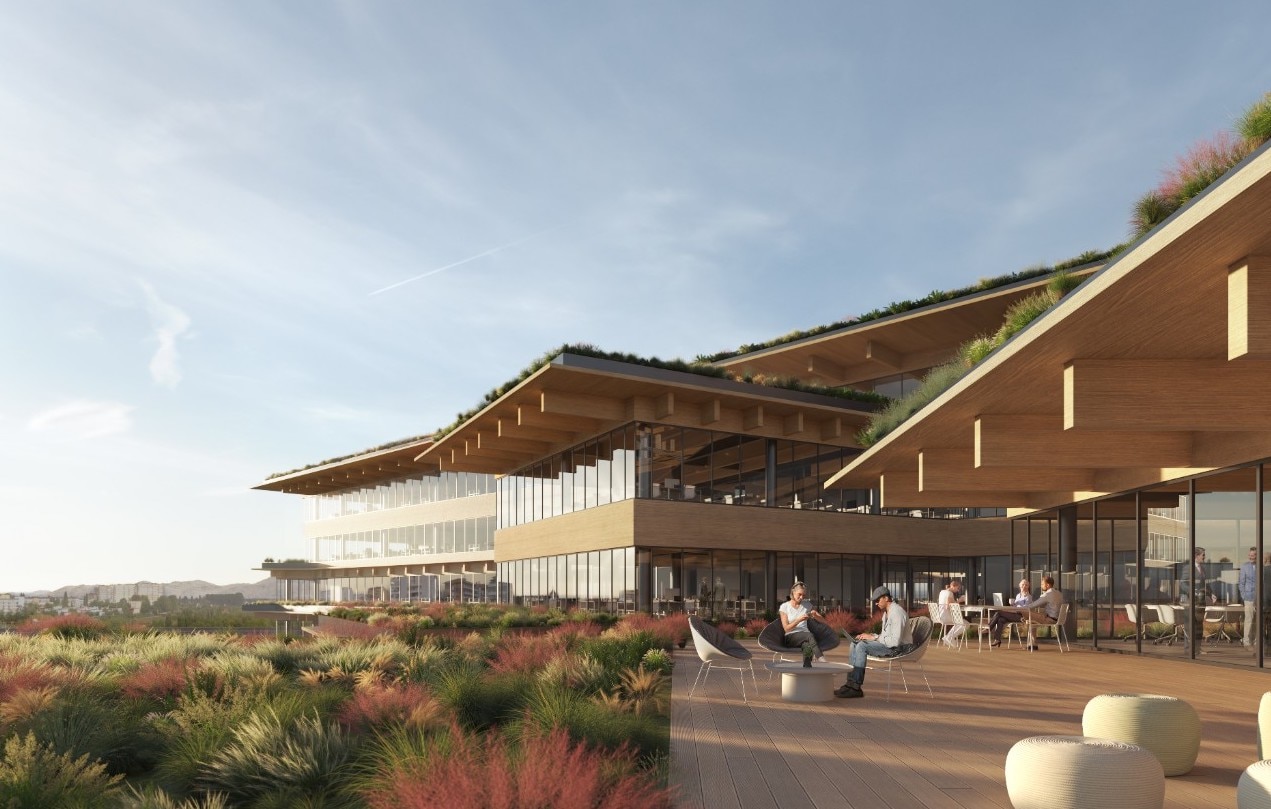
What about Milan? “The asset of Milan is widespread greenery, but it is always too little. It is the only city with a European spirit of transformation, but everything I am seeing from the urban planning point of view so far, seems to me quite already seen, and the amount transformed in natural terms does not seem exceptional. There are cases that contrast this situation, but they are very specific: we should tackle this issue head-on in an efficient or, better, effective way”.
As Mancuso does not claim for any long-dating belonging to Milan, he refers to a project he can knowledgeably disclose, i.e. Welcome Milano, the workspace he is creating with Kengo Kuma and Associates in the former Rizzoli buildings: “It is a building that will have zero impact, and this is fundamental”, he tells us. “Concrete as a building material is still one of the biggest producers of CO2 because of its supply chain, from production to installation. Those who build entirely or mostly with wood are not only reducing CO2 but storing it: a wooden beam is an object that will store for 50-70 years all the CO2 that the plant had stored. This way, the building’s carbon footprint is not only neutral: it is negative. In Milan, I don't see great attention in the construction of buildings from this point of view: I still see skyscrapers that are completely glazed, closed, totally out of date in environmental terms, with highly energy-consuming air conditioning they require”.
In Milan, I don't see great attention in the construction of buildings from this point of view: I still see skyscrapers that are completely glazed, closed, totally out of date in environmental terms, with highly energy-consuming air conditioning they require.
Stefano Mancuso
Mancuso, as it turns out, does not limit the spectrum of his research to theory and policies; on the contrary, he expands it to operations, to design, collaborating with many architects, both with technological projects such as the Fabbriche dell’Aria and with broader integrated consultancies. “Let me mention Renzo Piano, with whom I am very good friends, who called me in many occasions, such as the Grand Hopital de Paris: of course, many Fabbriche dell’Aria will be installed, but my contribution involved the whole aspect of sustainability, of the effects that plants can bring in such a project. By now there is a lot of scientific literature confirming that even just seeing plants by patients reduces healing and hospitalization time. (a fundamental of biophilic architecture, Ed.) Plants today should be part of any serious design process; in fact, Piano has envisioned a hospital covered with plants, an entire public park that starts from the ground level and climbs up to the roof”.
#StefanoMancuso: “We are turning into a #species that is only capable of living in cities, becoming a specialized species instead of the #generalist species we're supposed to be, capable of moving and adapt. We self imposed this #limitation, that could lead to our #extintction.” pic.twitter.com/ySUW4shMW6
— Domus (@DomusWeb) November 24, 2021
The question we can’t help but ask is whether any room is left, at this point, for individual activation, whether it still can make any sense, to make an urban environment healthier. And the answer is surprisingly positive: “Very mundane actions, design tools at even the household level like covering a facade with climbing plants. And then taking a broader view on what we mean about energy efficiency – for example, now in Europe we should be talking about how it's really through plants that you get it, and that's not happening. In a scenario like Italy, then, the picture gets even more complicated given the large volume of old or ancient real estate stock – in Florence where I live, for example – but there has to be a multi-decade if not multi-secular view on its environmental impact. Let's just take a 16th-century building in Florence, for instance, made of stone and wood: for 500 years it has stored its process-related CO2. A typical Dutch or Swedish building, on the other hand, torn down every 50 years, has a very high environmental cost with this constant process of undoing and rebuilding. A building with 10 reconstructions over 500 years has a much heavier overall impact, which is at odds with dominating descriptions, which are always linked to the prospect of new construction”.
Opening image: Stefano Mancuso

Accademia Tadini on Lake Iseo reborn with Isotec
Brianza Plastica's Isotec thermal insulation system played a key role in the restoration of Palazzo Tadini, a masterpiece of Lombard neoclassical architecture and a landmark of the art world.

